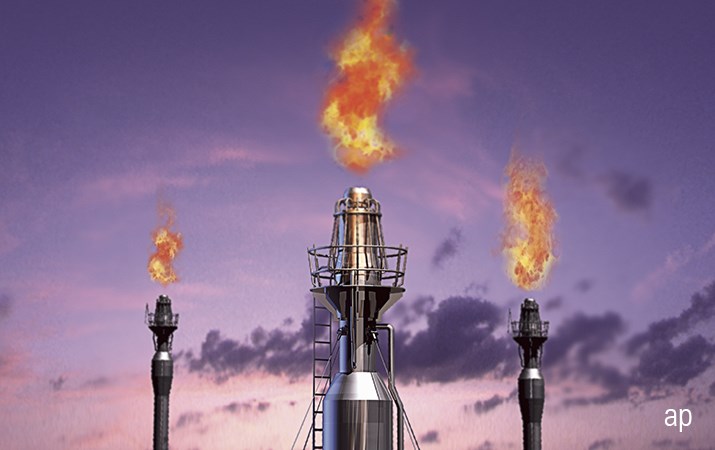
The failure of the OPEC+ coalition to reach an agreement on production cuts on March 6 has sent oil prices into a tailspin, with West Texas Intermediate dropping into the $20s in early trading and still on course to land in the low $30s. That’s the biggest single-day loss in almost 20 years, essentially wiping out all gains since the 2016 low after the shale-driven downturn.
Last week, the prevailing view was that the cartel and its partners, including Russia, would continue to support oil prices as the outlook for demand growth continues to deteriorate due to the worldwide coronavirus outbreak and its economic ramifications. Investors were anticipating, at minimum, that OPEC+ would agree to extend the current production cuts through 2020, instead of letting them expire at the end of March. The cartel agreed to do so on March 5, while increasing the volumes being withheld from 500 thousand barrels per day to 1.5 million barrels per day. But the proposal was not binding without cooperation from OPEC partners, and on March 6, Russia refused to participate in further cuts. That theoretically frees cartel members from production ceilings, leaving them free to ramp production to capacity and worsen the current supply/demand imbalance. The situation was exacerbated when Saudi Arabia started selling crude at heavy discounts, essentially igniting a price war and sparking pandemonium in the oil markets.
The resulting supply shock essentially coincides with a demand shock related to COVID-19, resulting in particularly steep price declines. We would not rule out further weakening after the dust settles at the end of March 9. The near-term outlook for energy companies is bleak, and it is likely that we will reduce many of our fair value estimates as a result. However, these issues only affect cash flows in the next one or two years. Russia and OPEC lack the capacity to displace U.S. shale producers in the global supply stack, which means the marginal supply cost is still $55/bbl WTI.
In late February, we argued that while the market was failing to incorporate the full impact of the coronavirus outbreak, the demand dip in 2020 would be offset by weaker-than-expected shale growth as well as prolonged OPEC cuts. But the situation has clearly evolved since then.
OPEC producers are now free to unleash their full capacity; there is no incentive for any individual producer to comply with prior ceilings. However, that does not necessarily mean a supply onslaught is coming. For some cartel members, recent production declines were involuntary, and no ceilings were in place anyway. For instance, U.S. sanctions have hampered Iranian exports, Venezuela is suffering from chronic mismanagement of its oil industry amid economic turmoil, and Libya has no central government, leaving warring factions to jostle for control of its production. Similarly, some producers have not invested enough in maintaining production, or are struggling with dwindling reserves. But there are those, like Saudi Arabia and United Arab Emirates, that do maintain excess capacity and are likely to ramp volumes this year. These producers demonstrated that capacity by boosting volumes temporarily in the back half of 2018, giving us confidence that they really can increase production. On balance, we now expect an incremental 1 mmb/d of supply from OPEC through the end of the year.
Likewise, Russia is not likely to deliver a huge surge in output. It most likely refused to make further cuts last week to avoid indirectly benefiting U.S. shale producers while sacrificing volumes itself (perhaps in retaliation for U.S. sanctions blocking the completion of its Nord Stream 2 Siberia-Germany natural gas pipeline). We expect it to restore the 300 mb/d it gave up upon joining OPEC+ at the end of 2016 in relatively short order. However, further growth potential is probably limited. If Russia could systematically undercut U.S. shale producers with meaningful volumes above its current output, it would probably have done that already instead of partnering with OPEC. Thus, in total we see an additional 1.5 mmb/d of supply finding its way to the market by the end of year from OPEC and Russia. That’s significant but does not threaten the existence of the 10-plus mmb/d U.S. shale industry.
Besides, the near-term collapse in oil prices that we are now witnessing will certainly erode U.S. growth this year, offsetting any excess from OPEC+. Diamondback Energy (FANG) and Parsley Energy (PE) have already announced plans to cut activity levels by 10%-20%, and these are better-capitalized firms, with much stronger margins, than most of their upstream peers. As a result, we now expect less than 1 mmb/d growth from the United States in 2020, which is half of what it delivered in the prior year. That’s not hugely different from our previous forecast, because there are long lags between changes in crude price, rig count, and production levels. However, we now expect only 500 mb/d growth from the U.S. in 2021.
So, even if the coronavirus outbreak keeps demand flat this year instead of growing by 1.2-1.3 mmb/d as previously expected, we do not see any glut going past 2021. Demand growth tends to be highly elastic with respect to prices, so next year’s growth could surpass the recent trend. It’s not unreasonable to assume 1.5 mmb/d cumulative growth in the next two years, even if 2020 growth is extremely weak. That offsets what we estimated earlier from OPEC+. It still leaves a small surplus for the U.S. growth we currently model, but at only about 500 mb/d, this could be soaked up in a number of ways--China taking advantage of lower prices to bolster stockpiles, U.S. producers dropping more rigs than we expect, conventional production declines outside the U.S., and so on. Beyond 2021, we still expect robust demand growth as disruptive factors like electric vehicles will take much longer to meaningfully reduce global crude consumption. Yet U.S. shale would be the cheapest source of incremental supply, and it has a marginal cost of $55/bbl for WTI. Prices must therefore recover to encourage this expansion, or the glut will flip into a painful shortage.




















